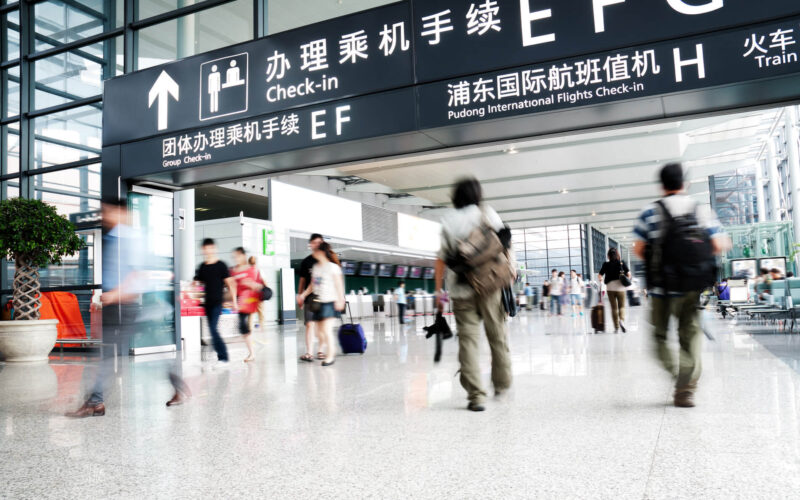The ongoing pandemic reordered cities’ air connectivity rankings. While declined traffic affects all markets, there are no winners.
The International Air Transport Association’s (IATA) air connectivity index, which measures how well connected are cities around the world, has significantly changed since 2019. The coronavirus crisis affected international connectivity and shook up the rankings of the most connected cities.
“Air connectivity is vital for the functioning of the modern economy. It links markets and people through city-pair connections that serve as virtual bridges supporting the flows of key economic activities across markets. Direct and efficient connections between cities enable the flows of goods, people, capital, technology and ideas,” states IATA’s Global Air Connectivity report.
“The dramatic shift in the connectivity rankings demonstrates the scale at which the world’s connectivity has been re-ordered over the last months,” said the senior vice-president for IATA, Sebastian Mikosz.
“But the important point is that rankings did not shift because of any improvement in connectivity. That declined overall in all markets. The rankings shifted because the scale of the decline was greater for some cities than others,” added Mikosz.
London loses its crown
London, the most connected city in 2019, slips down to number eight and loses its spot to Shanghai. The UK’s capital has seen a 67% decline in connectivity since the previous year, according to IATA.
In 2019, London handled 126.5 million passengers, more than any other city in the world. The main airports – Heathrow and Gatwick, together with Stansted, Luton, London City and Southend, helped London to keep its spot as the most connected city.
However, in October 2020, Heathrow reported an 82% decline in traffic, 69% fall in passenger flow and $1.96 billion third-quarter loss. Once the busiest airport in Europe, it lost its title to Paris Charles de Gaulles airport in France. The situation worsened after the UK went into the lockdown measures in the beginning of November 2020. Heathrow is losing about £5 million ($6,7 million) a day and forecasts passenger numbers of 22.6 million next year ‒ less than a quarter of 2019 levels.
China’s cities on top of the list
In 2020, the top four most connected cities are all in China. Shanghai took the title of being the most connected city. Beijing is the second city in terms of air connectivity. It is followed by Guangzhou and Chengdu in the third and fourth places and Shenzhen in the sixth. Except for Beijing and Shanghai, none of the other Chinese cities were in the top 10 of best connected ones in 2019.
The rise of Chinese metropoles was mainly due to a quickly recovering domestic market. Even though international travel is still limited, China’s success at controlling the spread of the COVID-19 infections gave way to domestic routes. Passengers were also enticed to fly by cheaper fares and strict safety protocols.
Reuters reported that China’s domestic travel rebounded over the eight-day Golden Week holiday at the start of October 2020. About 425 million people travelled around the country, according to the Chinese tourism ministry. In September 2020, a total of 371,000 domestic passenger flights were operated, 3.5% more than in 2019. Domestic passenger numbers reached 47.75 million, that is 98% of 2019’s levels.
US hubs shift in ranking
New York has witnessed a drastic shift in the ranking. In 2019, it was the third most connected city in the world. In 2020, it exited the list after its connectivity fell by 66%, according to IATA.
Airports with the most domestic operations have increased their connectivity. Chicago, the 10th most connected city in 2019, moved up to the 6th place, while Los Angeles went down from the 6th to the 7th. Dallas and Atlanta also joined the list due to domestic traffic and got the 9th and the 10th spots, respectively.
In 2019, Hartsfield-Jackson Atlanta International Airport was the busiest airport by passenger volume and saw 110.5 million passengers. In the first quarter of 2020, passenger traffic dropped to 20.7 million passengers.
No winners in global connectivity
Due to lack of connecting flights and passenger traffic, more cities have exited the list of top ten.
Tokyo and Bangkok’s connectivity dropped by 65% and 81%, respectively. Hong Kong witnessed a drop of 81% and Seoul ‒ of 69%.
IATA announced that the number of destinations connected directly by air service would decline to 14,765 in 2020, compared with 22,104 in the previous year. It is the biggest decline since the financial crisis in 2008.
It is clear that in the last few months world’s connectivity has been reorganized. IATA reported that all cities have been impacted by COVID-19 and none have really experienced connectivity improvement.
“There are no winners, just some players that suffered fewer injuries. In a short period of time we have undone a century of progress in bringing people together,” said Mikosz.
Mikosz also reiterated the urgent need to rebuild the global air transport network in order to boost connectivity. While waiting for the vaccine, the rapid testing should be implemented so the network and city-pair connections could be restored.
“The systematic testing of travelers is the immediate solution to rebuilding the connectivity that we have lost. The technology exists. The guidelines for implementation have been developed. Now we need to implement, before the damage to the global air transport network becomes irreparable,” outlined Mikosz.

